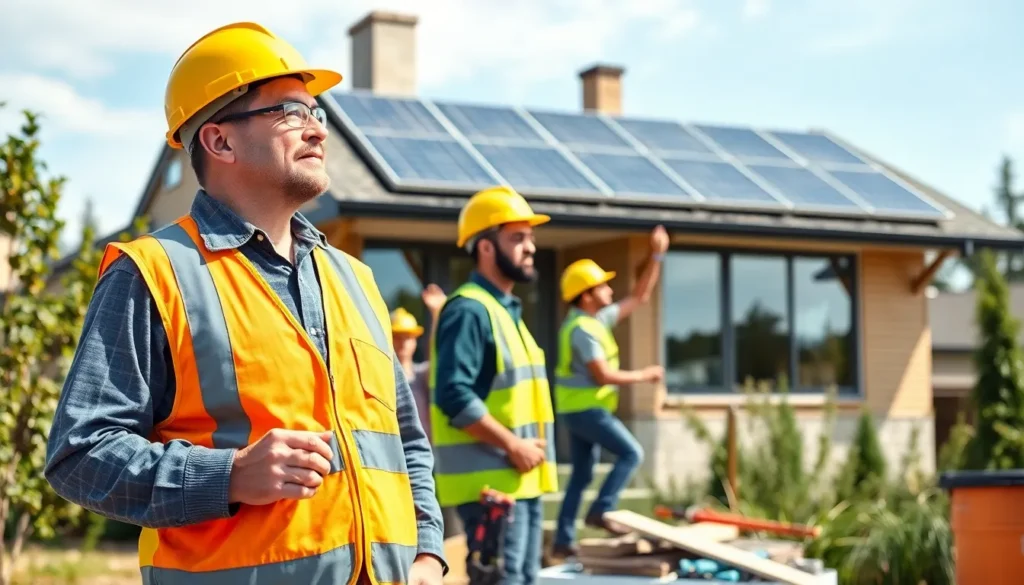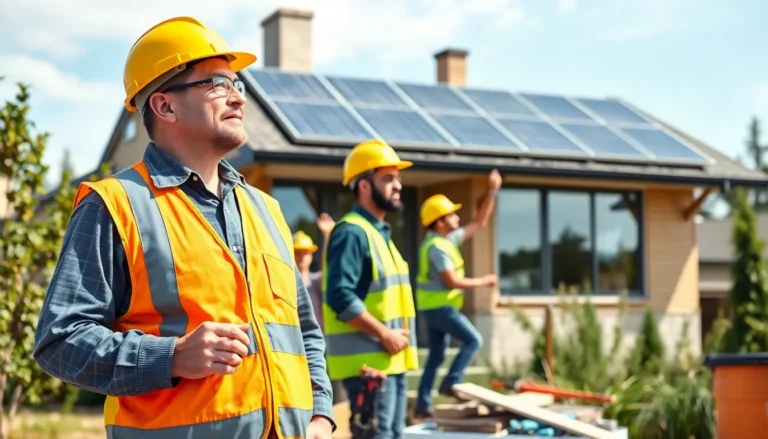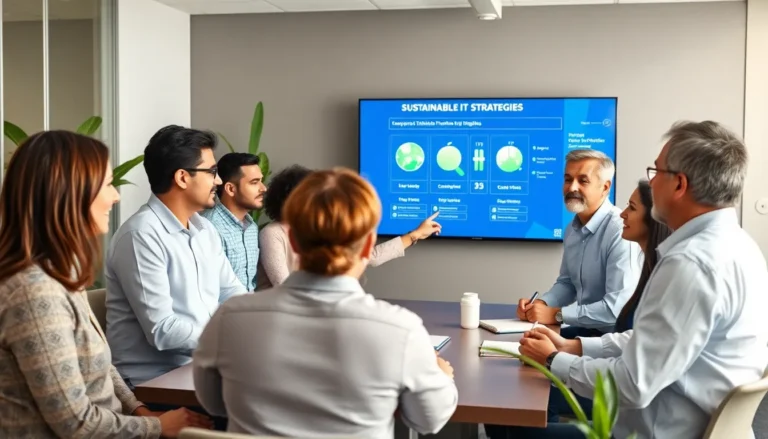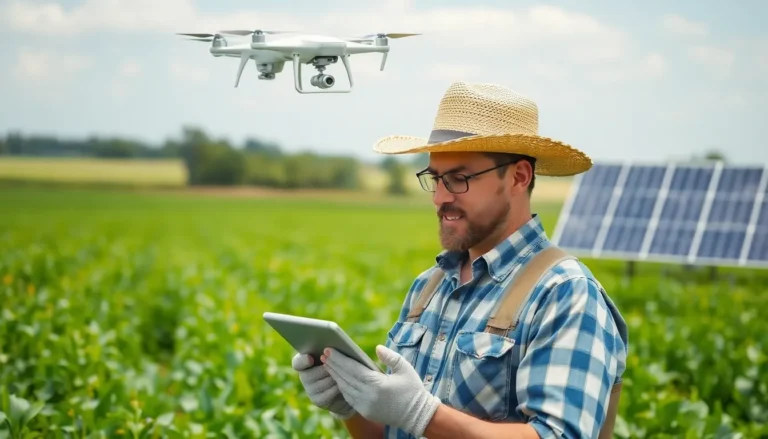Table of Contents
ToggleIn a world where building a house often feels like a race to see who can use the most resources, sustainable building technology offers a refreshing twist. Imagine constructing homes that not only stand tall but also hug trees and high-five the environment. It’s not just a trend; it’s a revolution that’s reshaping skylines and saving the planet one eco-friendly brick at a time.
With innovations like solar panels and energy-efficient materials, sustainable building technology is like the superhero of the construction world. It swoops in to save energy, reduce waste, and cut costs, all while looking good doing it. As more builders and homeowners jump on the green bandwagon, the future of construction is brighter—and a lot more sustainable. Who knew saving the planet could be so stylish?
Overview of Sustainable Building Technology
Sustainable building technology encompasses a range of eco-friendly practices and materials aimed at minimizing the environmental impact of construction. Innovations in this field include energy-efficient insulation, rainwater harvesting systems, and sustainable materials like bamboo and reclaimed wood. Solar energy systems play a crucial role in this movement, providing clean power and reducing reliance on fossil fuels, which contributes to lower utility costs.
Green building certifications, such as LEED and BREEAM, set benchmarks for resource-efficient design and operation. Builders seeking certification often adopt features like high-performance windows and smart thermostats to enhance energy efficiency. Additionally, using low-VOC paints and finishes improves indoor air quality, benefiting occupants by reducing exposure to harmful chemicals.
The integration of passive design principles also contributes significantly to reducing energy consumption. Techniques such as strategic building orientation and natural ventilation make spaces comfortable year-round while minimizing the need for mechanical heating and cooling. Builders leverage local materials, which decrease transportation emissions and support local economies, making sustainability a community-focused effort.
Incorporating technology further amplifies sustainable practices. Smart home systems allow for real-time energy monitoring, enabling owners to track usage and make informed decisions. As awareness of climate change grows, adapting sustainable building technologies becomes essential for future-proofing construction practices and safeguarding the environment. Through these combined efforts, the construction industry moves towards a healthier, more sustainable future.
Benefits of Sustainable Building Technology
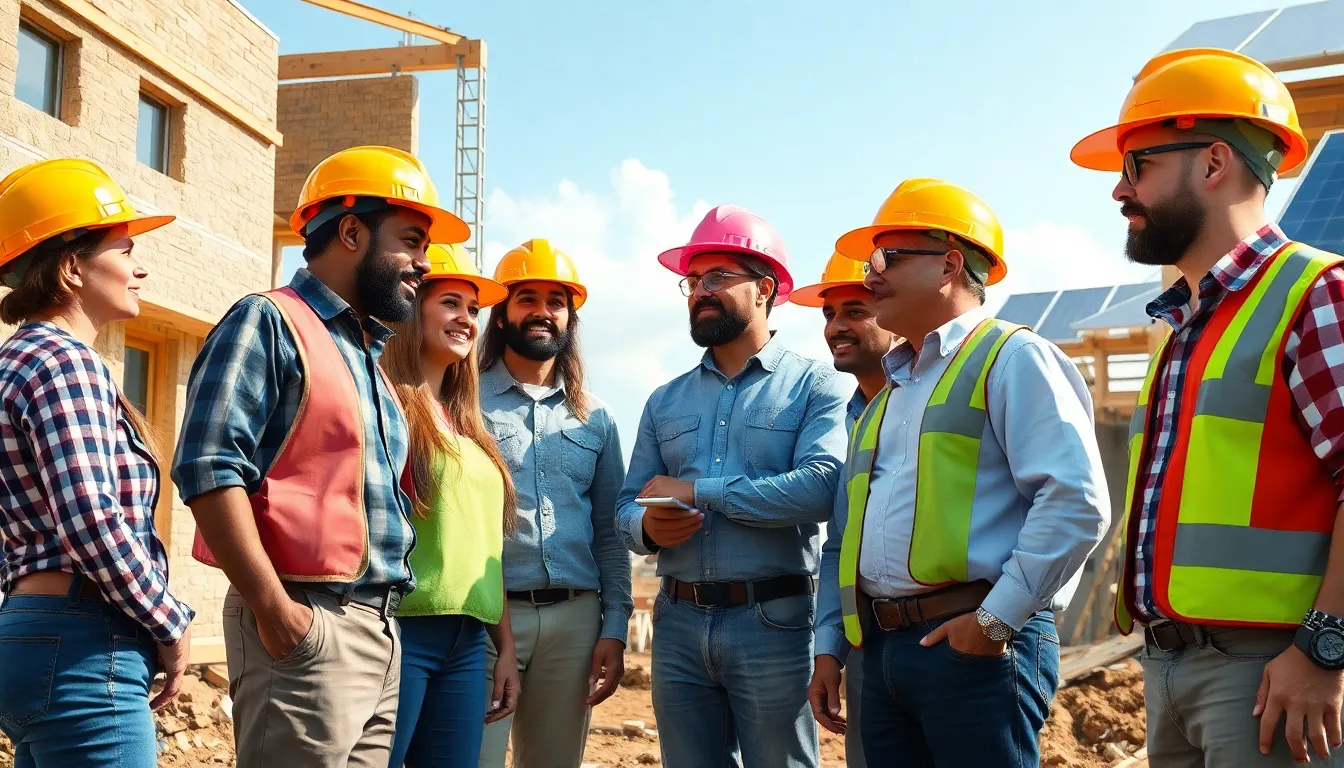
Sustainable building technology offers numerous advantages that positively impact the environment and economy. These benefits drive the movement towards greener construction practices.
Environmental Impact
Sustainable building technology significantly reduces carbon footprints. Renewable energy sources, like solar panels, minimize reliance on fossil fuels, resulting in lower greenhouse gas emissions. Energy-efficient materials and features, including high-performance insulation, limit energy consumption during heating and cooling. Water conservation practices, such as rainwater harvesting, support resource management and protect ecosystems. Local material usage reduces transportation emissions while bolstering local economies. Indoor air quality improves through low-VOC paints, enhancing the health of occupants. Collectively, these strategies contribute to a more sustainable future by preserving natural resources and minimizing waste.
Economic Advantages
Cost savings arise from the adoption of sustainable building technology. Energy-efficient systems lower utility bills, providing significant long-term savings. Green building certifications, like LEED or BREEAM, often increase property values and attract environmentally conscious buyers. Financial incentives, including tax rebates and grants, encourage investment in sustainable technologies. The reuse of materials not only minimizes waste but also cuts construction costs. Overall, sustainable practices foster an economic environment that prioritizes efficiency, making them a smart choice for builders and homeowners alike.
Key Technologies in Sustainable Building
Sustainable building technology incorporates innovative solutions to enhance eco-friendliness and efficiency. These technologies support the transition to greener construction practices.
Energy-Efficient Systems
Energy-efficient systems significantly reduce a building’s energy consumption. Smart thermostats optimize heating and cooling schedules, adapting to occupancy patterns. LED lighting consumes less energy compared to traditional bulbs, cutting electricity use. High-performance windows minimize heat transfer, maintaining comfortable indoor temperatures. Solar panels harness renewable energy, supplying power while minimizing reliance on fossil fuels. These systems collectively lower utility costs and decrease carbon emissions.
Sustainable Materials
Sustainable materials play a crucial role in reducing environmental impact. Recycled content materials, such as reclaimed wood, reduce waste in landfills. Low-VOC paints improve indoor air quality while minimizing harmful emissions. Bamboo and cork are renewable resources that offer durability and aesthetic appeal. Builders often source local materials to minimize transportation emissions and support local economies. Using these materials fosters a responsible approach to construction that prioritizes the planet.
Water Conservation Technologies
Water conservation technologies help manage and reduce water usage within buildings. Rainwater harvesting systems capture and store rainwater for irrigation or non-potable uses. Low-flow fixtures, including faucets and showerheads, drastically cut water consumption without sacrificing performance. Greywater recycling systems reuse water from sinks and showers for landscaping. Smart irrigation systems automatically adjust watering schedules based on weather conditions, ensuring efficient water use. Implementing these technologies supports sustainable resource management and promotes environmental stewardship.
Challenges in Implementing Sustainable Building Technology
Implementing sustainable building technology involves several challenges that stakeholders must navigate. High initial costs frequently deter developers from adopting eco-friendly technologies. Many energy-efficient materials and systems often carry a premium price tag, making upfront investment difficult.
Complexity of design and construction processes also poses significant hurdles. Integrating advanced technologies, such as solar panels and rainwater harvesting systems, requires specialized knowledge that many contractors lack. Workforce training becomes necessary to ensure efficient installation and maintenance of these systems.
Regulatory obstacles can further complicate implementation. Building codes and zoning regulations may not support innovative sustainable practices, creating delays in project approval. Additionally, discrepancies between local policies and sustainable practices can lead to confusion among builders and developers.
Limited product availability restricts options for builders aiming for sustainable solutions. In some regions, access to certified materials and sustainable technologies may be constrained, limiting project scope. This unavailability often forces builders to compromise on sustainable objectives.
Market incentives play a crucial role in shaping the adoption of sustainable building technology. While federal and state incentives exist, they might not always align with industry needs or provide sufficient motivation. Increased awareness of these incentives can help encourage investment in sustainable practices.
Consumer awareness also affects the success of sustainable building projects. Homebuyers may prioritize aesthetics and immediacy over long-term benefits like energy efficiency. Increasing education on the advantages of sustainable buildings can bridge the gap between consumer demand and innovative practices.
Collaboration among stakeholders is essential for overcoming these challenges. Architects, builders, and local authorities must work together to create a shared vision of sustainability. Effective communication can lead to innovative solutions that promote the integration of sustainable technologies in new construction projects.
Sustainable building technology is reshaping the construction landscape by prioritizing eco-friendly practices and enhancing living spaces. As the industry embraces innovations like energy-efficient systems and sustainable materials, the benefits extend beyond environmental impact to economic advantages for homeowners and builders alike.
Overcoming challenges in implementation will require collaboration among architects, builders, and local authorities. By fostering awareness and prioritizing sustainability, the construction sector can pave the way for a greener future. The commitment to sustainable practices not only addresses current environmental concerns but also ensures the well-being of future generations.

